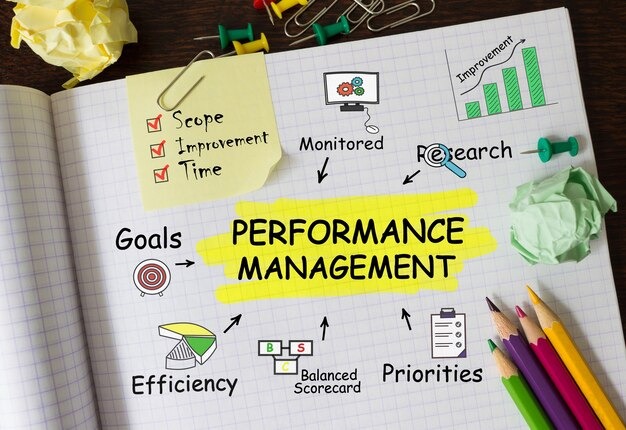How to Implement an Effective Performance Management System
Published on February 6, 2025

Author: Yiga Richard
An effective performance management system (PMS) is crucial for driving employee engagement, improving productivity, and aligning individual goals with business objectives. However, many organizations struggle to create a system that provides real value beyond annual performance reviews.
In this article, we’ll explore the best practices for implementing a performance management system that fosters continuous growth and accountability.
1. Define Clear Goals and Objectives
A performance management system should align with your company’s mission, vision, and strategic goals. Start by clearly defining:
📌 Company objectives – What are your business priorities?
📌 Departmental goals – How does each team contribute to overall success?
📌 Individual performance expectations – What key responsibilities should employees focus on?
Using the SMART (Specific, Measurable, Achievable, Relevant, Time-bound) goal-setting framework helps ensure that objectives are clear and actionable.
2. Establish a Continuous Feedback Culture
Traditional annual performance reviews are no longer sufficient. A successful PMS fosters ongoing feedback and regular check-ins rather than one-time evaluations.
🔄 One-on-one meetings – Encourage managers to meet regularly with employees.
🔄 360-degree feedback – Gather input from peers, managers, and direct reports.
🔄 Real-time recognition – Acknowledge achievements as they happen.
Continuous feedback enhances communication, reduces misunderstandings, and keeps employees motivated.
3. Utilize Performance Metrics and Key Performance Indicators (KPIs)
Performance should be measurable and data-driven. Define relevant KPIs to evaluate employee performance objectively. Some key areas to track include:
✅ Productivity metrics – Task completion rates, efficiency, and project deadlines.
✅ Quality of work – Customer feedback, accuracy, and error rates.
✅ Collaboration and teamwork – Contribution to team projects and peer reviews.
✅ Professional development – Progress in skill-building and training programs.
Using HR analytics and performance tracking software can streamline this process and provide real-time insights.
4. Encourage Employee Development and Growth
A strong performance management system goes beyond evaluation—it supports employee growth and career development. Provide opportunities for:
📚 Training and skill development – Offer access to courses, certifications, and workshops.
🚀 Career progression planning – Help employees set long-term career goals.
🎯 Mentorship programs – Connect employees with experienced mentors for guidance.
When employees see that the company is invested in their growth, they are more engaged and committed to their roles.
5. Foster Open Communication and Transparency
Employees should clearly understand performance expectations and evaluation criteria. Transparency in the performance management process builds trust and accountability.
🗣 Communicate PMS objectives and criteria upfront.
📄 Provide clear documentation on performance reviews.
💡 Encourage open discussions about challenges and improvements.
When employees understand how their performance is assessed, they are more likely to take ownership of their responsibilities.
6. Implement the Right Performance Management Tools
Leveraging technology can make performance management more efficient and data-driven. Consider using:
💻 Performance management software (e.g., BambooHR, 15Five, Lattice)
📊 Goal-tracking tools (e.g., OKR frameworks)
📈 Employee engagement surveys
These tools help in tracking progress, automating performance reviews, and maintaining accurate records.
7. Reward and Recognize Employee Contributions
Recognition plays a vital role in keeping employees motivated. Implement a structured rewards system to acknowledge outstanding performance.
🏆 Monetary incentives – Bonuses, salary raises, or commissions.
🎖 Non-monetary recognition – Public appreciation, certificates, or extra time off.
📢 Peer recognition programs – Encourage team members to recognize each other’s efforts.
Employees who feel valued and appreciated are more likely to stay engaged and productive.
8. Review and Improve the System Regularly
Performance management should be an evolving process. Regularly assess your system’s effectiveness by:
✅ Gathering employee feedback on the PMS.
✅ Analyzing performance trends and making necessary adjustments.
✅ Keeping up with industry best practices.
A flexible and adaptive system ensures long-term success and continuous improvement.
Conclusion
An effective performance management system is essential for maintaining a high-performing, engaged, and motivated workforce. By focusing on clear goals, continuous feedback, employee development, and recognition, businesses can boost productivity and drive long-term success.
🚀 Ready to improve your performance management approach? Start implementing these strategies today!